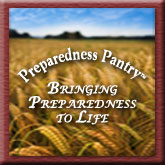You should be aware of your potential emergencies now, based on geography and demographics. You've also noticed some of the basic things on the appropriate list for your area from FEMA or another website that you reviewed. Find a box and a spot on a shelf. Start moving the things you already have that would be essential in an emergency to the box. Exclude food items at this time.
Ensure that the box is somewhere that you can get to it safely if the power is out and the lighting is minimal. Make sure that if you have only one flashlight, it is located in a place that is easy to find in the dark.
Once you have put what you have in the box, it's time to start thinking about food. Many of the websites advise 3 days of food. I think more makes sense. What if you live alone or are the single head of household and get a bad case of the flu? You may not be able to walk to the bathroom for 3 days, much less get to the grocery store!
My suggestion is at least 1 week of reasonable food availability. That includes a few cans of fruit packed in juice not syrup, some canned tuna or chicken, baked beans that have some seasoning --like Bush's or B+M-- why not a couple of cans of the B+M brown bread to go with the beans? Things like this are ready to eat right from the can, are nutritious and not overly salty. The one exception is chicken noodle soup, if your emergency really is that case of the flu you should have several cans. I found it at Target a week ago for 50 cents a can, so it isn't unreasonable to have a couple or three if you can get it at the summer price! BUT we're not at the point that you should be buying anything for your preparedness, just collecting what you have.
Find a shelf where you can put your 'emergency food.' If you have many people in your household, put a little sign on the shelf "OFF-LIMITS, EMERGENCY ONLY." Start with the can of fruit and tuna that you can spare, or at least wait a week or two before you need to use.
Do not store salty snacks for your emergency kit unless you anticipate hiking in the heat. Salty things will make you waste water. Speaking of which, know what your water storage is and have a little extra. If you have a hot water heater dedicated to your home, check how many gallons it holds. This could be your main storage. For planning purposes, you should have 3 gallons per person per day. If you have more liquid food items, you may be able to get away with 2 gallons per person -- 1 to drink and cook, 1 for personal sanitation. Look around to see what you have to store water that you drain out of the water heater. If you don't have a water heater, start saving those 2-liter soda pop bottles to fill with water after they are empty and rinsed.
That's all for now. Just locate your two places, start to assemble a few of the things you already have, and check out your water heater. See? Getting prepared isn't so hard, is it?
Getting prepped
3 years ago




No comments:
Post a Comment